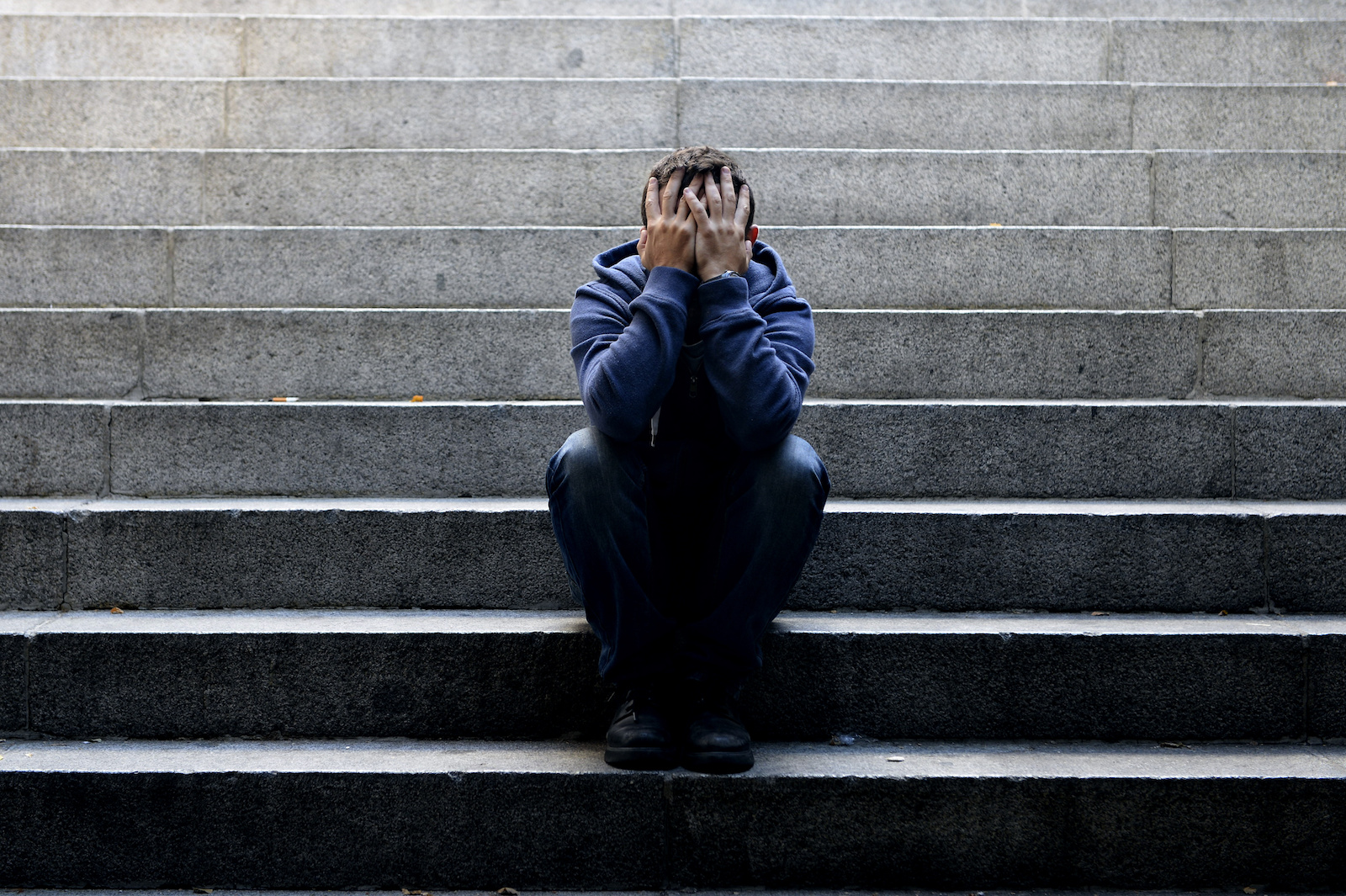
Table of Contents
Klonopin is a relatively common prescription medication that can help treat panic attacks in people with anxiety disorders and to help relieve seizures in people with seizure disorders. It’s also, unfortunately, a medication that is often targeted for recreational use because of the pleasant feelings it can create.
It’s also important to remember that at least some people who take Klonopin and similar medications recreationally may be attempting to self-treat a disorder that may or may not be diagnosed. That reality can make treatment more difficult sometimes, especially if you don’t realize that you’re taking the medication to treat your symptoms.
Because Klonopin is a relatively common prescription and a drug that can be used recreationally and can be addictive, people need to understand the addictive risk and symptoms of Klonopin withdrawal.
With that in mind, we’re going to talk a little about Klonopin addiction, but we’re mostly going to focus on Klonopin withdrawal, what you should expect, and how to go through withdrawal safely.
Remember, this isn’t just a guide for people addicted to Klonopin. If you’ve been taking this drug as medically prescribed, you can still develop a dependence, which may mean you must go through withdrawal if you need to stop taking Klonopin or change medications.
Let’s get started.
What Are The Withdrawal Symptoms Of Klonopin?
Withdrawal happens when you stop taking any drug your body has a chemical dependence. Depending on how withdrawal is managed, you might have milder symptoms or almost none, but many drugs can cause withdrawal symptoms.
We mention that because there is much stigma associated with going through withdrawal, and we assume that only people with an addiction experience withdrawal.
Withdrawal can be a sign of addiction, and people who are addicted to a drug are more likely to have withdrawal symptoms than others, but that doesn’t mean that they get it exclusively.
So, withdrawal from Klonopin may be both a sign of an addiction or a sign that your body is starting to develop a chemical dependence on the drug that isn’t necessarily an addiction.
Recognizing withdrawal symptoms is important because you might not notice them immediately. Especially if you’re taking Klonopin for panic attacks, you might even mistake the early symptoms of withdrawal, which often include anxiety, for the onset of a panic attack!
That’s important because you’ll get relief from your symptoms either way when you take Klonopin, but if you’re starting to withdraw from the medication while using it as prescribed, it’s important to talk to your doctor to see what management options are available to you.
Instead of dealing with withdrawal symptoms when you stop taking the medication, they may recommend changing medications (which may require a withdrawal first), or they may rebalance your medications so you can still take Klonopin but don’t need to take it quite as often.
Regardless of how you end up in Klonopin withdrawal, it’s important to understand the symptoms so you can recognize them and know what’s happening ahead of time.
Here are some of the most common symptoms of Klonopin withdrawal:
- Headaches
- Tremors
- Insomnia
- Sleep problems
- Hyperventilation
- Muscle spasms
- Loss of appetite
- Tinnitus
- Seizures (especially if taking Klonopin for a seizure disorder)
- Dizziness
- Light sensitivity
- Weight loss
You might notice a lot of overlap between these symptoms, the drug’s side effects, and the disorders it’s commonly used to treat. That’s true, and one of the things that makes recognizing Klonopin withdrawal difficult and more important.
It’s important to watch for these symptoms when you don’t expect them, especially if they seem to happen more often when your dose starts to wear off or between doses.
Especially in the case of taking Klonopin for seizure disorders, it’s important to remember that some of these symptoms, particularly grand mal seizures, dizziness, and muscle spasms, may also indicate that the medication isn’t quite covering the worst of your symptoms.
Any time you have these symptoms while taking Klonopin, you must speak with a medical care provider to help you figure out what’s going on and the best course of action.
In addition to these physical side effects, many mental side effects may happen during Klonopin withdrawal, regardless of why you’re taking the drug in the first place. These symptoms include:
- Anxiety
- Irritability
- Panic attacks
- Nightmares
- Strange sensations
- A feeling of unease
- Restlessness
- Depression
- Difficulty concentrating
- Confusion
- Hallucinations
- Suicidal thoughts
- Feelings of unreality or dissociation
- Distorted body image
These symptoms can be potentially serious and are a good reason not to be alone while dealing with Klonopin withdrawal. Even if you’ve dealt with these symptoms before and been able to manage them, it’s important to have people nearby who can help you manage your symptoms and can call for help or take you to a medical care provider if you need it.
Klonopin Withdrawal Symptoms Timeline
In addition to knowing what symptoms to look for, it’s also important to understand when the symptoms will start, when they are supposed to end, and when it’s safe to start another medication if you’re transitioning between different options.
Your doctor can help with those details if you’re transitioning, but it’s also a good idea to research on your own, so you know what to expect and have resources you can reference if you get anxious or concerned in the middle of Klonopin withdrawal.
First, you need to know that it takes longer than average for Klonopin to leave your system, which also means it takes longer than average for withdrawal to start.
Most people start experiencing the acute phase of Klonopin withdrawal within roughly 2 to 7 days after their last dose.
The acute phase is when your symptoms are likely to be most intense. In rare cases, withdrawal may be dangerous, while other people experience a more mild discomfort and less serious or concerning symptoms overall.
The acute phase of withdrawal typically lasts between 2 to 8 weeks once it starts and will vary in intensity through that time. Some people have their most serious symptoms at the beginning of the acute phase, while others have more serious symptoms closer to the middle or end of the acute phase.
After the acute phase, some people may experience what’s called protracted withdrawal or long withdrawal. Symptoms get less serious in this phase but may not go away entirely for up to a year.
Don’t panic, though! Protracted withdrawal isn’t guaranteed, no matter how much Klonopin you’ve been taking or why, and protracted withdrawal symptoms are almost always easier to manage than the acute phase.
Your primary care provider can help manage the symptoms of protracted withdrawal if you have it, as can healthy habits like regular exercise and getting plenty of sleep.
How The Severity Of Klonopin Withdrawal Symptoms May Be Pointing To An Underlying Addiction
If you have severe Klonopin withdrawal symptoms, that may be a sign that you’ve developed a chemical dependence on the medication. In some cases, that’s both normal and expected, and that is why you’ll have to slowly reduce your dose before stopping if you ever decide to stop taking the medication or switch medications.
However, withdrawal symptoms may indicate something wrong if you take Klonopin only occasionally or for recreational reasons. Developing a chemical dependence from occasional use isn’t a good sign and may indicate that you’re having to take Klonopin too often or that your recreational use of the drug may have become an addiction.
In either case, it’s important to talk to your doctor about your concerns and see how you can safely transition away from using Klonopin.
If you suspect you may have an addiction, it’s important to stop taking Klonopin and to get help detoxing and dealing with your withdrawal symptoms. Remember, withdrawal can be dangerous, so it’s important to make sure you have the help you need and deserve.
How To Detox Safely & Mitigate Klonopin Withdrawal Symptoms
It’s important to have a plan to manage Klonopin withdrawal symptoms, especially if you’re dealing with it due to recreational use. Having a plan will make it easier to deal with the symptoms and will also keep you safer for you throughout the process.
Remember that it’s important to have people who can come keep an eye on you when symptoms get worse, and to have a safety plan for when to call medical care providers, when to call emergency services, and how to keep yourself as safe and as comfortable as possible in the meantime.
You’ll want a list of easy-to-make foods and drinks to track how much you’re eating and drinking to ensure you don’t get dehydrated or malnourished by accident.
Because the withdrawal from Klonopin is longer than many other medications and can be more complicated to manage, you might want to consider going to a residential treatment center to get the full support and help you deserve.
Going to a treatment center might seem like a big step, but they’re well positioned to manage both your mental and physical symptoms, keep you safe, and reduce stress levels to make symptoms easier to manage and provide medical interventions if they’re needed.
This can also be important because it means that you’ll always have help immediately, which may be important for symptoms like seizures and suicidal thoughts.
If you think that going to a residential treatment center might be a better option than trying to manage your Klonopin withdrawal on your own at home, Ocean Recovery is here to help. Contact us to learn more about our programs for people going through detox and withdrawal or to start the intake process.
Sources:
- MedlinePlus. Clonazepam: MedlinePlus Drug Information. Published May 15, 2021. Accessed September 21, 2022. https://medlineplus.gov/druginfo/meds/a682279.html
- Osborn CO. How Long Does Withdrawal From Klonopin Last? Verywell Mind. Published November 5, 2021. Accessed September 21, 2022. https://www.verywellmind.com/klonopin-withdrawal-symptoms-timeline-and-treatment-4176203
- RxList. Klonopin (Clonazepam): Uses, Dosage, Side Effects, Interactions, Warning. RxList. Published July 14, 2020. Accessed September 21, 2022. https://www.rxlist.com/klonopin-drug.htm






